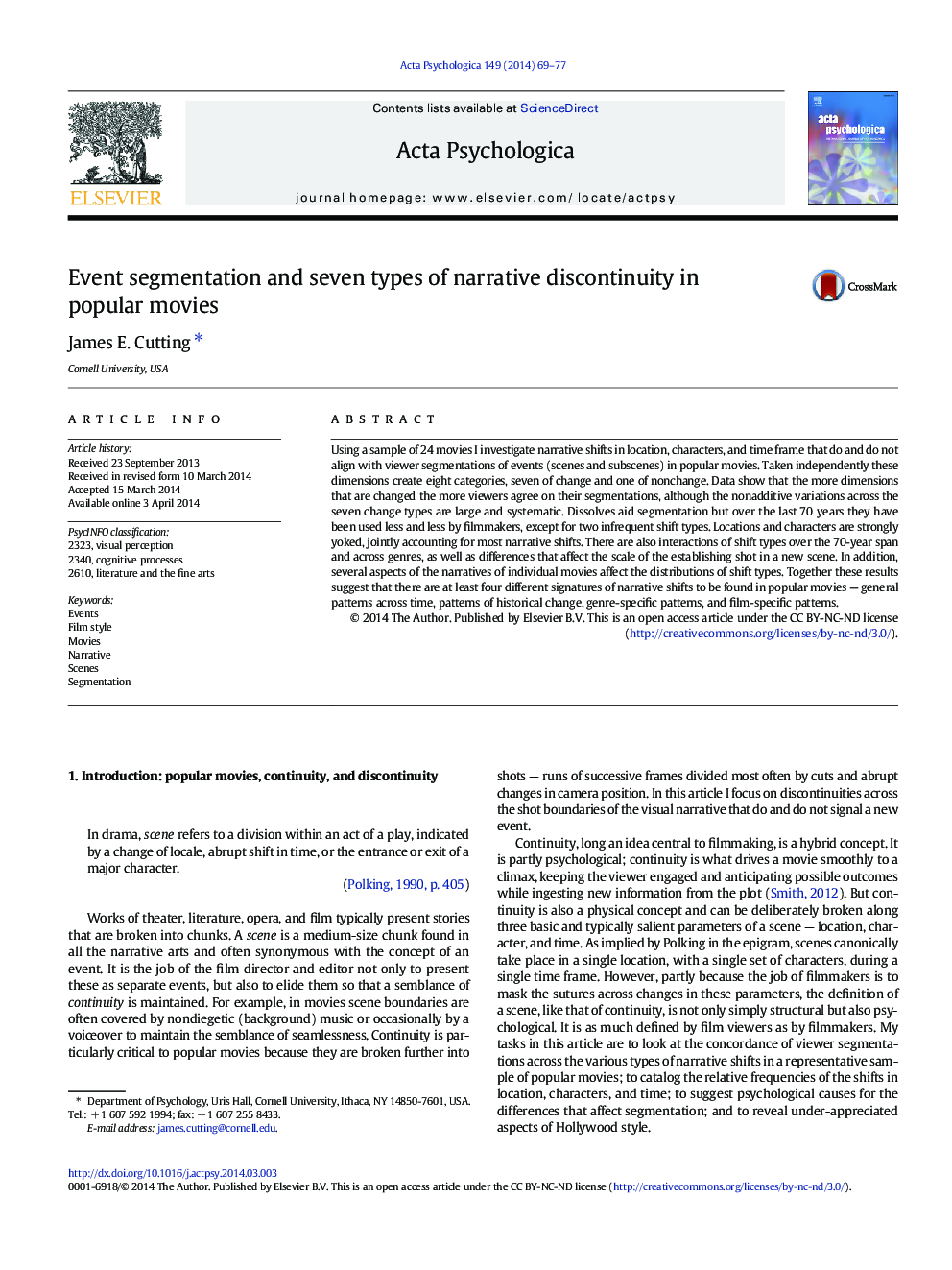| Article ID | Journal | Published Year | Pages | File Type |
|---|---|---|---|---|
| 7277670 | Acta Psychologica | 2014 | 9 Pages |
Abstract
Using a sample of 24 movies I investigate narrative shifts in location, characters, and time frame that do and do not align with viewer segmentations of events (scenes and subscenes) in popular movies. Taken independently these dimensions create eight categories, seven of change and one of nonchange. Data show that the more dimensions that are changed the more viewers agree on their segmentations, although the nonadditive variations across the seven change types are large and systematic. Dissolves aid segmentation but over the last 70Â years they have been used less and less by filmmakers, except for two infrequent shift types. Locations and characters are strongly yoked, jointly accounting for most narrative shifts. There are also interactions of shift types over the 70-year span and across genres, as well as differences that affect the scale of the establishing shot in a new scene. In addition, several aspects of the narratives of individual movies affect the distributions of shift types. Together these results suggest that there are at least four different signatures of narrative shifts to be found in popular movies - general patterns across time, patterns of historical change, genre-specific patterns, and film-specific patterns.
Related Topics
Life Sciences
Neuroscience
Cognitive Neuroscience
Authors
James E. Cutting,
